#Coleomegilla maculata
Text
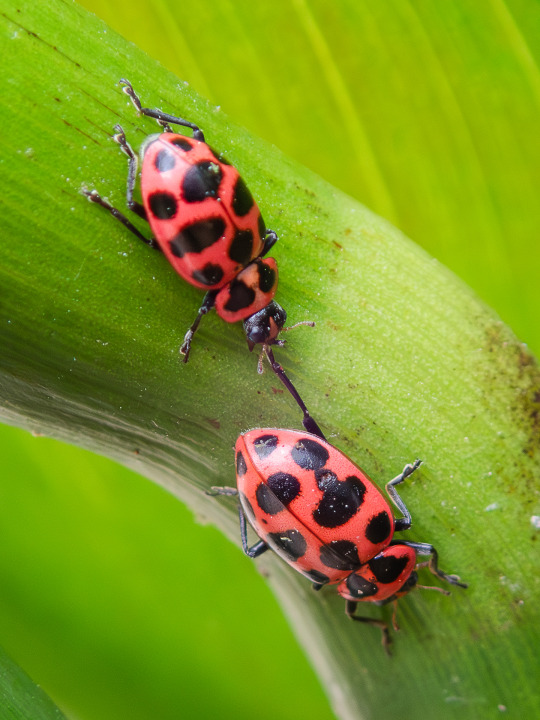
Scientific Name: Coleomegilla maculata
Common Name(s): Spotted pink lady beetle
Family: Coccinellidae (lady beetle)
Life Stage(s): Adult
Location: Plano, Texas
Season(s): Summer
#Coleomegilla maculata#spotted pink lady beetle#Coccinellidae#Plano#Texas#summer#red#lady beetle#beetle#Coleoptera#insect#bugblr
12 notes
·
View notes
Text


Pink spotted lady beetle (Coleomegilla maculata) patrolling a sunflower field in Pennsylvania.
Like many lady beetles, both adults and larvae are voracious predators of aphids. They’re nice little friends to have around your garden :-)
#Coleomegilla maculata#pink spotted lady beetle#lady beetle#ladybug#bugs#nature#nature photography#biodiversity#animals#inaturalist#arthropods#entomology#insect appreciation#insects#beetles#coleoptera#bugblr#garden friends#pest control#biological control#summertime#vicious predator#aphid control#no more aphids#nom nom nom
5 notes
·
View notes
Text

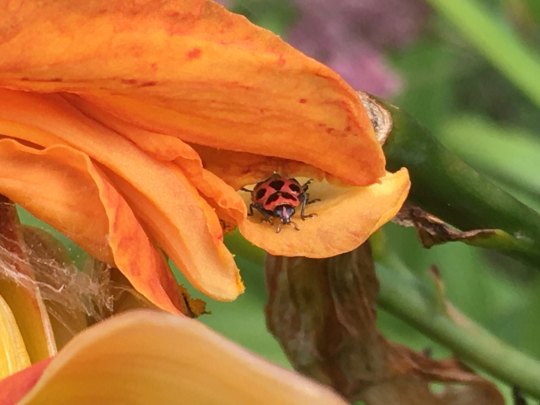
spotted pink lady beetle, Coleomegilla maculata
1 note
·
View note
Text
BUGS i saw at the CORN MAZE in south central WISCONSIN


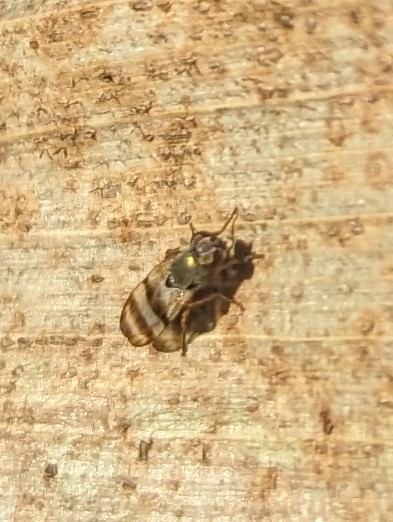

in order: some type of North American Spur-throated Grasshopper (genus Melanoplus), Coleomegilla maculata (commonly known as the pink spotted lady beetle), some type of banded-wing fly (genus Chaetopsis), and Diabrotica virgifera virgifera (Western corn rootworm).
10.21.2023
#bugs#bugblr#insects#insect#bug#entomology#oc#grasshopper#pink spotted lady beetle#ladybug#fly#flies#diptera#coleoptera#leaf beetles#orthoptera
87 notes
·
View notes
Text

SHORT CUP OF WATER
NO ICE
NO WATER
BUG
...
The BUG in question is Coleomegilla maculata, the pink spotted lady beetle, and is native to North America.
#bugs#bugblr#insect#insects#entomology#bug#bug art#id in alt#insect art#beetle#pink spotted lady beetle#lady beetle#ladybug#🐞
563 notes
·
View notes
Text
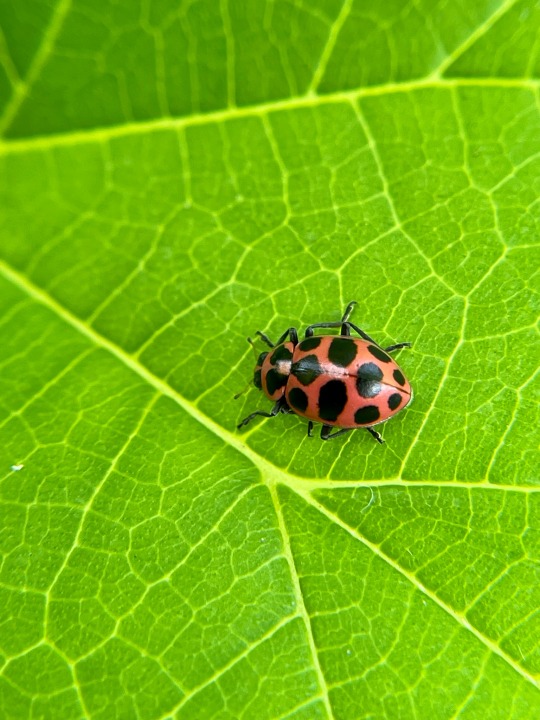

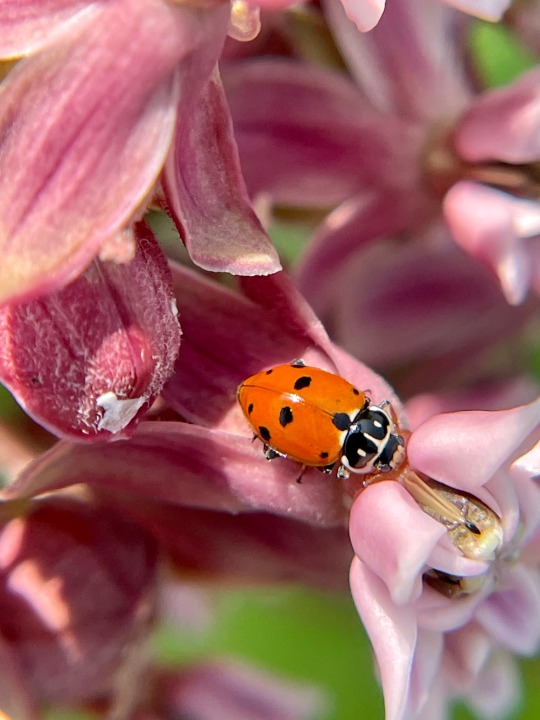
Spotted Pink Lady Beetle (Coleomegilla maculata)
Polished Lady Beetle (Cycloneda munda)
Variegated Lady Beetle (Hippodamia variegata)
31 notes
·
View notes
Text
Moth of the Week
Fall Webworm
Hyphantria cunea
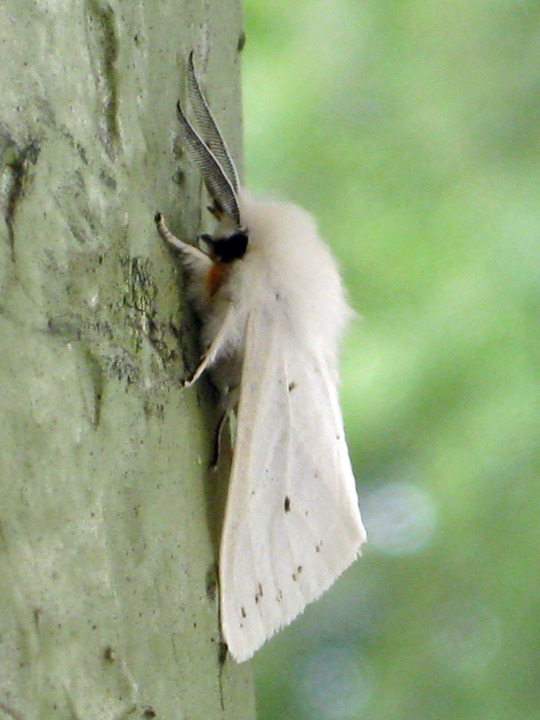
The fall webworm is in the family Erebidae. Described by Dru Dury in 1773, this moth is known for creating webbed nests as caterpillars and living in them until the pupa stage. They are considered pests in some areas due to their tendency to defoliate trees while feeding as larva and are known as an invasive species in East Asia.
Description Adult moths are mostly white in color with white legs that are black/brown and white in color. The top two legs are orange on the segment closest to the body. Under the eyes are patches of the same orange color and on occasion there are orange spots on the abdomen. In the north, the wings are completely white while in the south, the wings are speckled with brown or black spots.
Average wingspan: 38.5 mm (≈1.5 in)
Diet and Habitat The fall webworm feeds on just about any type of deciduous tree and can defoliate entire beaches or trees. In the eastern U.S., these moths prefer pecan trees, black walnut, American elm, hickory, fruit trees, persimmon, and sweetgum. In the west, alder, willow, cottonwood and fruit trees are commonly eaten. Adult moths do not feed.
This species is native to North America, ranging from Canada to Mexico, was introduced into other continents in the 1940s, and has since then spread. First recorded in 1949, this moth was introduced to the former nation of Yugoslavia and spread from France to the Caspian Sea and further into central Asia: Turkmenistan, Uzbekistan, Kyrgyzstan, and southeastern Kazakhstan. When introduced to Japan in 1945, it spread to generations per year since its arrival.[5] It spread into China, southern Mongolia, Korea and southern Primorsky Krai of Russia. Now it is considered holarctic, meaning found in almost all regions of the Northern Hemisphere.
Mating The mating season starts in late June and lasts until early July. In the northern part of North America, this species has one generation per year. The larvae hatch and live in late summer through early fall. In the south, which is cons to be under an approximate latitude of 40°N, there are two or more generations annually and nests appear progressively earlier the further south you go. Male fall webworms are typically only available for mating for about 30–60 minutes per day. This moth even shows a form of fall parental behavior. The female will try to protect the eggs after oviposition by covering her newly laid eggs with her abdomen hairs. Females lay the eggs on the underside of the host plants’ leaves in groups of about 100.
Predators The fall webworm has many predators such as Monomorium minimum, Vespula spp., Coleomegilla maculata, and Rogas hyphantriae.This species is parasitized by around 50 species, such as the flies Musca domestica and Muscina stabulans, and parasitic wasps such as Chouioia cunea and Therion morio. There are also several species of microsporida (unicellular spore parasites) such as Nosema necatrix Kramer, Weiser, and Nosema bombycis that are harmful. This species is also harmed by several viruses such as granulovirus and nucleopolyhedrosis virus. The caterpillars protect and defend themselves by shaking and jerking together, giving off a repellant scent, and irritants on their hairs or spines.
Fun Fact The fall webworm is a social insect as groups of caterpillars live in spun nests made from webs. These webs have many benefits like finding of mates, temperature regulation, increased growth rate, and protection from predators. However they also result in higher rates of infections and predation.
(Source: Wikipedia, USDA Forest Service, Missouri Department of Conservation)

@turkeygamemaster
#libraryofmoths#animals#bugs#facts#insects#moth#mothoftheweek#lepidoptera#fall webworm#Hyphantria cunea#Erebidae
24 notes
·
View notes
Text
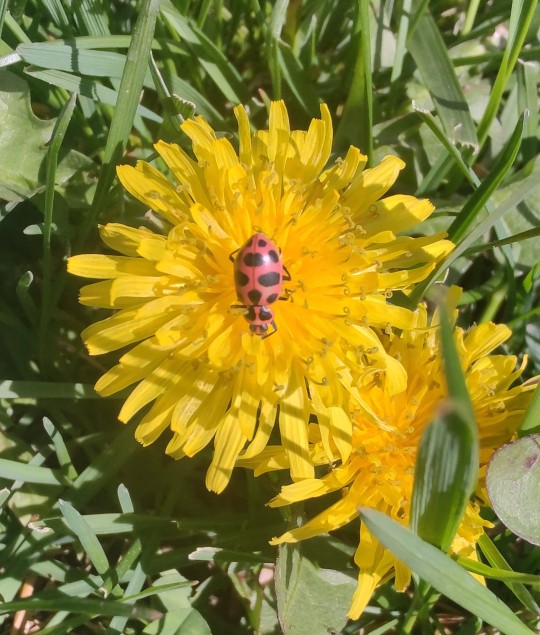
Pink Lady Beetle (Coleomegilla maculata)
32 notes
·
View notes
Photo
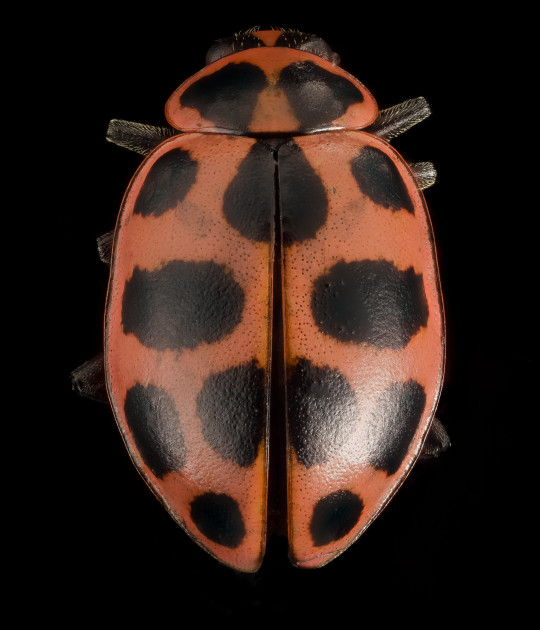
Spotted lady beetle, Coleomegilla maculata, a relatively common native species of lady beetle, sadly most of the most common lady beetles are not native these days. This one, interestingly, feeds an awful lot on pollen from flowers, and therefore I often catch it when collecting bees. This one was captured at Blackwater National Wildlife Refuge in the lovely marshes of Dorchester County Maryland. Photograph by Elizabeth Garcia.
26 notes
·
View notes
Text
Nature Memo #1
I decided to go on a little adventure over the weekend since I had three days off (I generally work on the weekends and am almost always on-call for crisis situations). I picked up a new journal so that I could collect plant samples and press them. I've been intending to do this for way too long (2011) but have not gotten around to doing it until now.
I find nature to be mesmerizing and way too often taken for granted. Parks are great, and those with unpaved nature trails are even better. But even then, they are taken for granted.
In any event, below are the list of observations that I made. This is incomplete because I did not include the trees and shrubs that were observed. Of the 29 listed items below, 10 were ones that I had not previously recorded, so I'm pretty excited about that. The total number of living species (plants, insects, birds, reptiles, fungi, arachnids, mammals, fish, mollusks, amphibians, and other species) that I have recorded (as in, photographed, dated, and confirmed the species of) is now 276.
Plants observed (all pressed!)
Oxalis triangularis, False Shamrock
Narcissus poeticus, Poet’s Narcissus
Achillea millefolium, Common Yarrow
Muscari neglectum, Grape Hyacinth
Galium aparine, Catchweed Bedstraw
Stellaria media, Common Chickweed
Oxalis violacea, Violet Woodsorrel
Vinca minor, Lesser Periwinkle
Bowlesia incana, Hoary Bowlesia
Narcissus tazetta, Bunch-flowered Daffodil
Veronica persica, Bird’s-eye Speedwell
Valerianella locusta, Common Cornsalad
Allium vineale, Wild Garlic
Cardamine hirsuta, Hairy Bittercress
Ranunculus hispidus, Bristly Buttercup
Ornithogalum umbellatum, Common Star-of-Bethlehem
Houstonia pusilla, Tiny Bluet
Viola bicolor, American Field Pansy
Claytonia virginica, Virginia Spring Beauty
Insects observed
Camponotus pennsylvanicus, Black Carpenter Ant
Papilio rutulus, Western Tiger Swallowtail (Butterfly)
Coleomegilla maculata, Spotted Pink Ladybeetle
Polistes Carolina, Red Wasp
Eurema lisa, Little Yellow (Butterfly)
Celastrina ladon, Spring Azure (Butterfly)
Amphibians observed
Pseudacris crucifer, Spring Pepper (Frog)
Fungi observed
Trametes versicolor, Turkey-tail
Cladonia evansii, Evan’s Deer Moss
Arachnids observed
Oxyopes salticus, Striped Lynx Spider
Next step is to let the pressed plans dry, followed by labeling, dating, notes on GPS coordinates for each sample, as well as information on whether it it is edible, seasonal growth, and if I am feeling particularly brave I will attempt to draw them.
All of these samples were taken in Arkansas between Siloam Springs, Pea Ridge National Battlefield, and Bella Vista.
#plants#pressing plants#hiking#arkansas nature#oklahoma nature#pea ridge national battlefield#insects#fungi#arachnids#amateur naturalist#biology#personal#nature memo#nerd#nerd alert#nerd stuff
2 notes
·
View notes
Photo
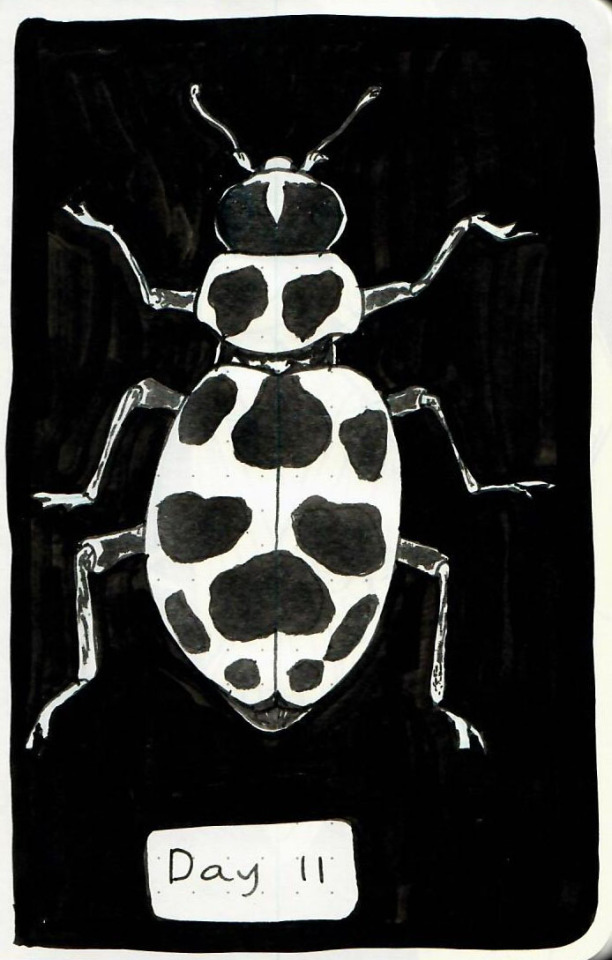
Day 11: Pink spotted lady beetle (Coleomegilla maculata)
Link to my masterlist
0 notes
Photo
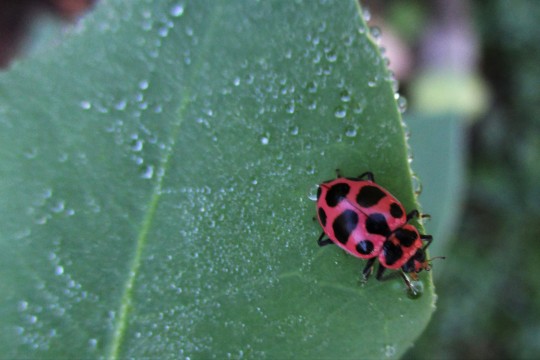
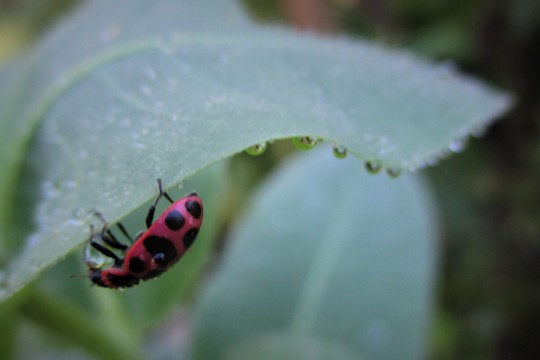
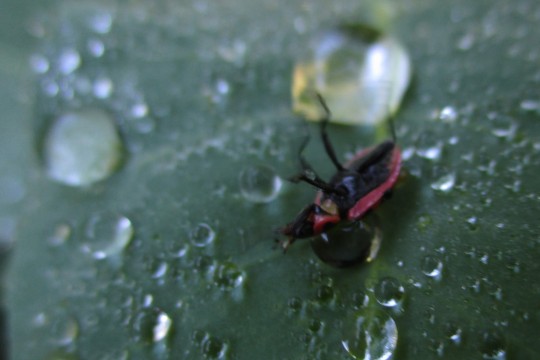
Coleomegilla maculata
AKA, Spotted Lady Beetle, drinks dew before getting stuck in a droplet, waving her legs madly. She is a native species so we’re glad to meet her and happy to know she struggled free and flew away home.
#original photography blog#bug#insect#bettle#ladybug#beetle#spotted lady beetle#coleomegilla maculata#dew
14 notes
·
View notes
Photo
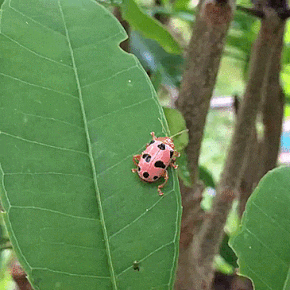
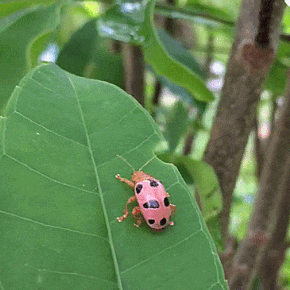
insecthaus_adi on ig
#mine#coleomegilla maculata#pink spotted lady beetle#spotted pink lady beetle#beetles#ladybugs#insects#stim#pink#nature#green#gif
2K notes
·
View notes
Photo

Spotted Ladybeetle (Coleomegilla maculata) swimming in a sea of dandelion
2 notes
·
View notes
Photo
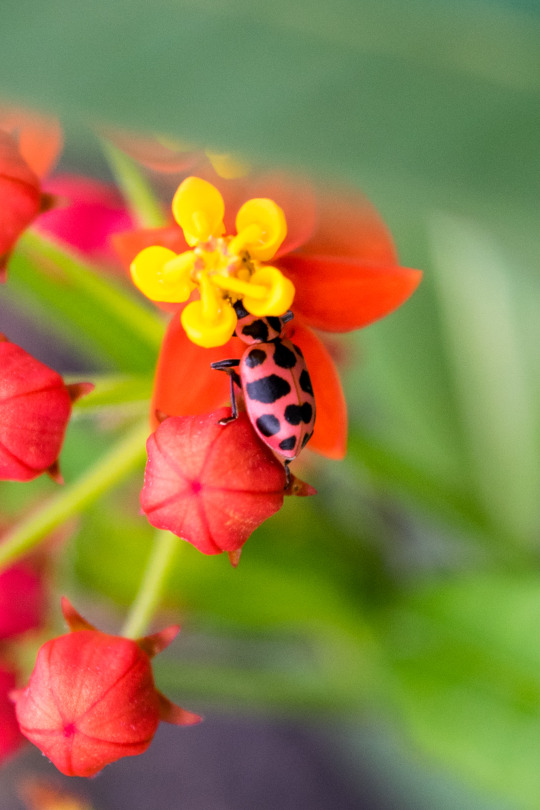
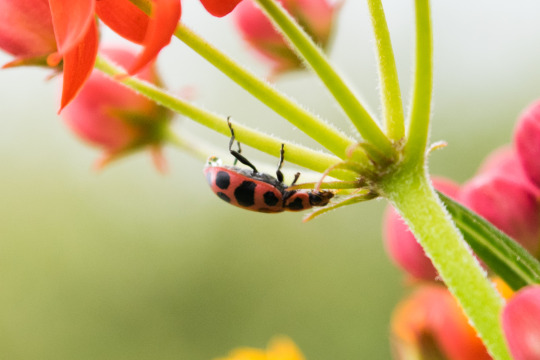

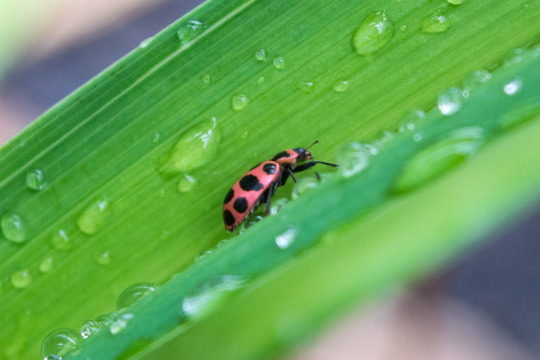


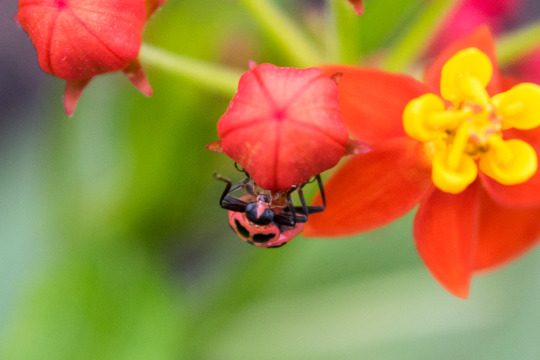
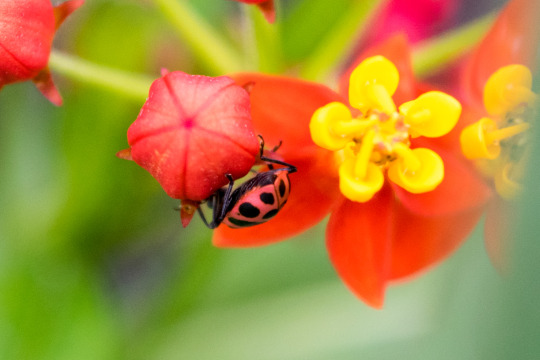
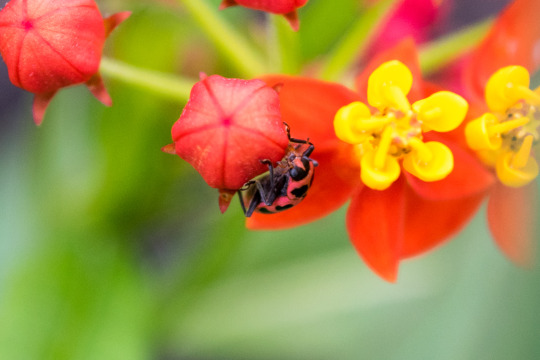

[8/28/20] Spotted Pink Ladybeetle, Coleomegilla maculata.
also sometimes called a “spotted ladybeetle”, which is one of the most non-descriptive common names I’ve ever heard
#beetle#beetles#ladybug#lady beetles#insect#insects#outdesign posts things#outdesign attempts to photo#insect catalog#also very fashionable
52 notes
·
View notes
Photo

This is the 68th installment of 'Since I've Been Gone'. Taken on the same day as the last post while on my Iowa hitchThis is the 63rd installment of 'Since I've Been Gone'. Taken on 2020 6th October while on my Iowa hitch with @americanconservationexperience, I found another lady beetle on the same day, this one being the spotted pink ladybeetle (Coleomegilla maculata). They are most recognized for being an essential biological control of all sorts of crop pests due to being present wherever there is prey, such as aphids. It am among the many ladybeetles of North America. #animal #animals #wildlife #insect #insects #insectagram #iowawildlife #iowanature #nature #fauna #invertebrate #invertebrates #beetle #beetles #imago #ladybird #ladybirds #ladybirdbeetle #ladybirdbeetles #animalia #arthropod #arthropods #arthropoda #insecta #coleoptera #coccinellidae #coleomegilla #coleomegillamaculata #spottedpinkladybeetle #aceinspires (at Palo, Iowa) https://www.instagram.com/p/CWGqbT_Pqis/?utm_medium=tumblr
#animal#animals#wildlife#insect#insects#insectagram#iowawildlife#iowanature#nature#fauna#invertebrate#invertebrates#beetle#beetles#imago#ladybird#ladybirds#ladybirdbeetle#ladybirdbeetles#animalia#arthropod#arthropods#arthropoda#insecta#coleoptera#coccinellidae#coleomegilla#coleomegillamaculata#spottedpinkladybeetle#aceinspires
2 notes
·
View notes